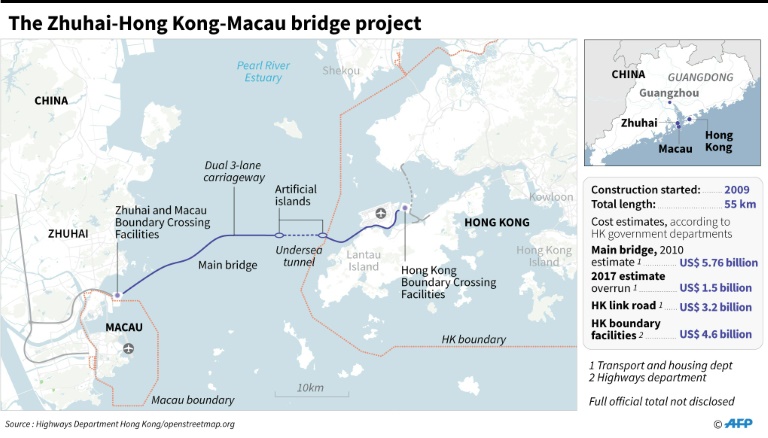Khune hits out at former Chiefs apprentice
Touted as an engineering wonder, the world's longest sea bridge, which connects Hong Kong, Macau and mainland China, includes a snaking road crossing and an underwater tunnel and reportedly uses enough steel to build 60 Eiffel Towers.

The big bridge to China
Nine years after construction began on the 55-kilometre (34-mile) crossing, a preview organised by the Chinese government this week offered a first peek into the megaproject.
The bridge will link Hong Kong to the southern Chinese city of Zhuhai and the gambling enclave of Macau, cutting across the waters of the Pearl River Estuary.
Eyes right: Cars will have to change sides of the road when they get into Hong Kong, which drives on the left
Although the opening date has not been confirmed, officials expect the bridge to be in use for 120 years and say it will boost business by cutting travel time by 60 percent.
The Hong Kong-Zhuhai-Macau Bridge was nine years in the making
The 420,000 tonnes of steel used for the project represent 60 times the amount used in the Eiffel Tower, China’s official Xinhua news agency said.
Gao Xinglin, the bridge’s project planning manager, said the construction of the 6.7-kilometre underwater tunnel gave him sleepless nights.
The crossing is not in use yet, but is expected to cut travel times by up to 60 percent
“There were many nights where I couldn’t fall asleep, because there were too many difficulties during the construction,” Gao told reporters Wednesday.
“Linking the 80,000-tonne pipes under the sea with watertight technology was the most challenging,” he added.
For whom the toll booths? There will be a charge for driving from Zhuhai to Hong Kong
The total price tag for the project, which includes artificial islands, linked roads and new border-crossing facilities, is unclear but some estimates run to over 100 billion yuan ($15.1 billion), leading critics to slam it as a costly white elephant.
Opponents in Hong Kong say the project is part of Beijing’s drive to tighten its grip on the semi-autonomous city.
The world’s longest sea bridge will not be a place for pedestrians when it finally opens
Dogged by delays, budget overruns, accusations of corruption and the deaths of construction workers, the bridge failed to open by the end of 2017 as hoped.
There have also been safety concerns after 19 lab workers were charged over faking concrete test reports, with one man jailed last December.
Download our app